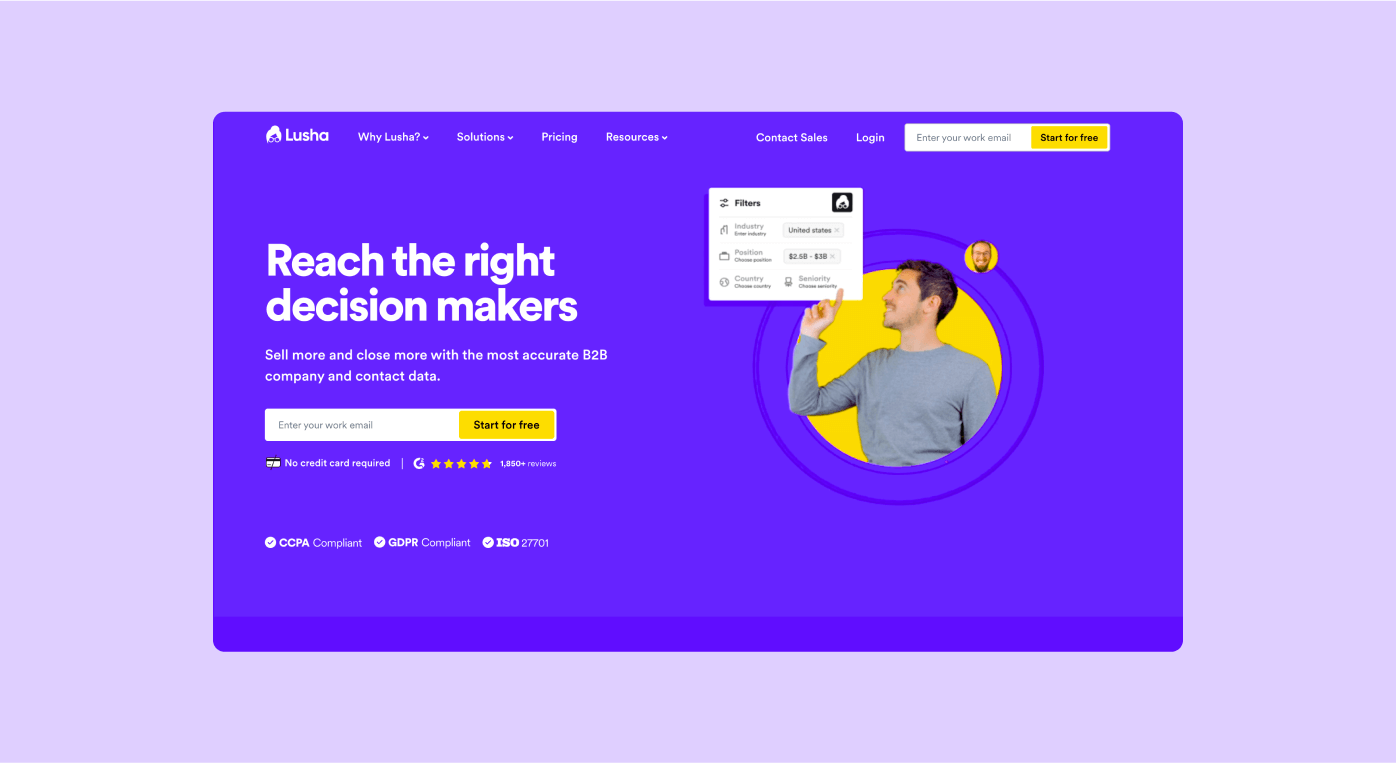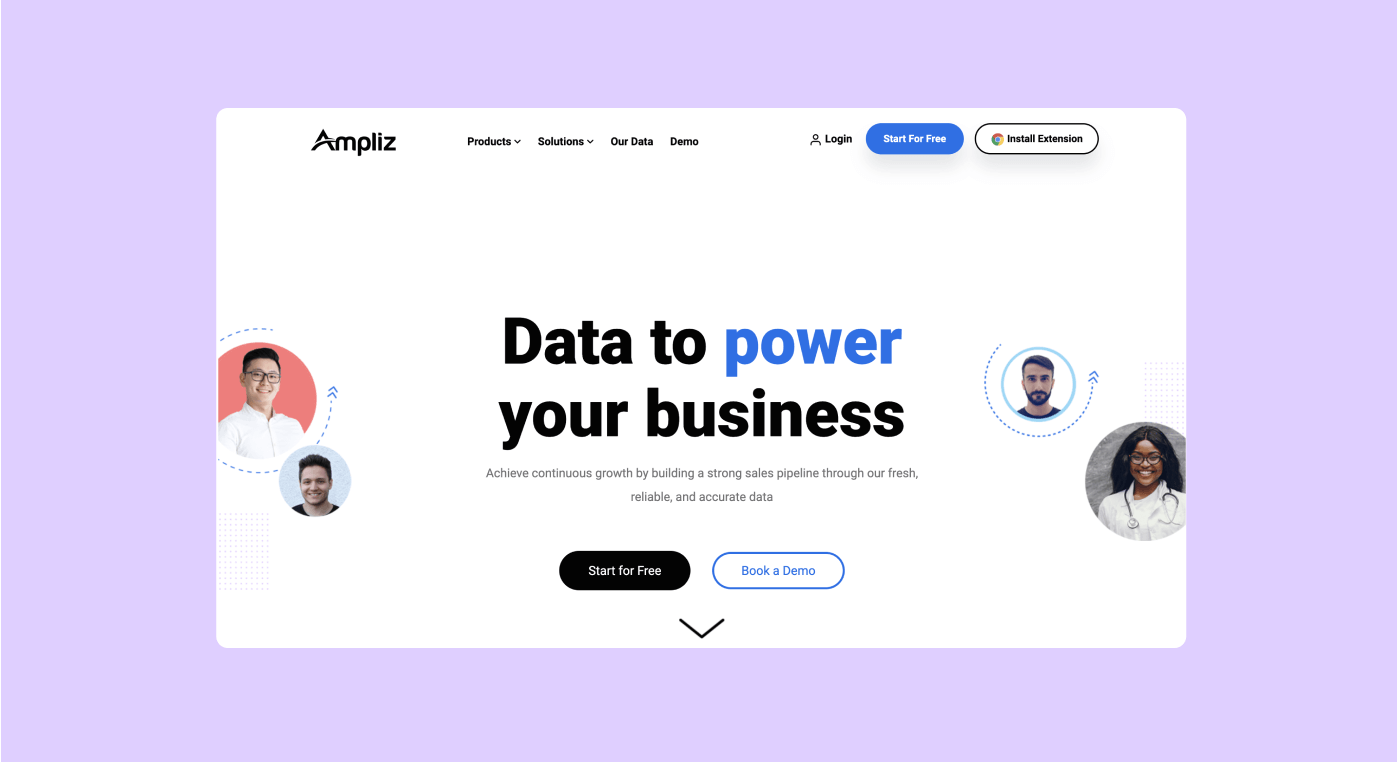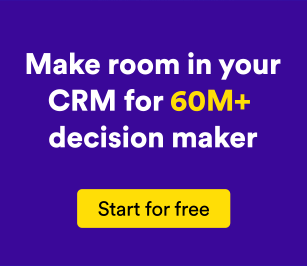A B2B database is instrumental to your revenue success. It aggregates contact information about your ideal prospects and simplifies complex prospecting, lead generation, and outreach activities. Let’s put it this way, a solid B2B database is crucial if you want to succeed in engaging the right type of prospects and buyers. If all this B2B […]
A B2B database is instrumental to your revenue success. It aggregates contact information about your ideal prospects and simplifies complex prospecting, lead generation, and outreach activities. Let’s put it this way, a solid B2B database is crucial if you want to succeed in engaging the right type of prospects and buyers.
If all this B2B database talk is new to you, you’re probably wondering, what’s B2B data and where do I get it?
Read on as we’re about to give you the inside scoop on everything you need to know. By the end of this B2B database guide, you’ll know:
- What a B2B marketing database is.
- How to get accurate B2B data.
- How to create an effective B2B database.
- The best B2B contact database for marketing today.
Let’s dive right in!
What is a B2B Marketing Database?
B2B data literally means business-to-business data. It refers to any information about another business and the people in that business. This is data that a B2B startup can use to market its products or services to another business effectively.
B2B data mainly targets key decision makers in a particular company for one obvious reason. You see, your role as a B2B marketer is to influence your leads’ purchasing decisions. To succeed, you want to focus on the people with buying power and target them in creative ways. By connecting with the right people right away, you instantly increase your chances of cultivating relationships that lead to conversion. You get it?
An effective B2B database is a systematic collection of information regarding another business. This database mainly consists of phone numbers and email addresses. That’s why it’s also known as a B2B contact list. A B2B database or contact list that drives lead gen and pipeline will be comprised of:
- Demographic data– information that relates to a population’s age, email ID, phone number, location, and skills.
- Firmographic data– business and company data including the company’s name, location, size (number of employees and revenue), and industry.
- Technographic data– information regarding the software and hardware that your potential customers use.
- Chronograph data– information that refers to events that occur in your target company’s business environment, making them more receptive to your products or services. This data includes company IPO, major transfer or hiring, location funding, and even bad revenue reports.
- Intent data– behavioral information related to your potential buyer’s online behavior that signals their intention and readiness to engage or buy.
How Can I Get More B2B Data?
Now that you understand what a B2B database is, let’s deal with another question that we’re asked every time: “where does B2B data come from?”
There are 2 major sources of B2B data:
- Public channels– are sources where personal and organizational data is readily available. Think websites, newspapers, online news articles, and social media profiles, such as LinkedIn and Twitter.
- Private channels- are sources with restricted data. Information is only accessible to those who have permission and subscribers. Examples include paywall websites and DaaS providers.
Knowing where the data you’re searching for comes from is one thing; obtaining it is another.
Small and medium-sized businesses have two options when it comes to obtaining data from public and private channels. Each has its strengths and weaknesses.
In-house Data Sourcing
One significant advantage of in-house data sourcing is that the IT team is always available. Secondly, small businesses can utilize affordable email finder tools and other cheap methods to gather the necessary data. This is particularly valuable when there are financial constraints restricting the business from outsourcing data.
The cons are mainly around resource availability. Building such a team requires training existing employees and improving the available infrastructure. If you don’t have experienced personnel in-house, you may have to find new hires, train them and invest time- recruiting will instantly impact your payroll costs. At the end of the day, in-house data sourcing can be a drawn-out investment and just not worth it for a small or medium-sized business.
Outsourcing B2B Data
The biggest advantage of outsourcing B2B data is having professionals with a specific skill set do the job for you.
Another reason why smart B2B businesses prefer commissioning a third-party firm is that this approach technically cuts costs. For example, you don’t have to invest in infrastructure, space, storage, and training your IT staff.
Speaking of cutting costs, don’t forget that you only hire the specialist firm for the duration of that particular project. So when their job is done, then there won’t be extra costs to incur on your side.
Certainly, the major drawback of outsourcing is that in-demand skills almost always command competitive rates compared to in-house operatives. This may be true in the short run. But when you compare the cost of setting up and maintaining a specialized IT infrastructure with that of hiring a professional firm, it’s clear that outsourcing often comes with a significantly lower B2B cost per lead.
How Do You Create a B2B Database?
Inaccurate B2B marketing databases are among the main reasons for poor sales pitches. Outdated data not only makes it hard to convert accounts but also leads to time wastage, missed opportunities, and lost revenue. Here’s how you can create a quality B2B contact list from scratch in 3 easy steps.
Step 1: Start by Outlining your Ideal Customer Profile
An Ideal Customer Profile (ICP) tells a story of which companies (not end consumers) will best benefit from the solutions you’re offering. This is a valuable step that ensures that all your marketing team’s effort and resources focus on companies that are more likely to purchase and use your products or services. This makes a lot of sense in that your reps don’t end up wasting money and time chasing leads who weren’t going to convert anyway.
To create an effective ICP, engage your sales team to analyze your existing customers’ characteristics and patterns:
- Which industries are they from?
- Where are they located?
- What’s their size in terms of the number of employees and revenue?
- What are their main pain points?
- How soon do they see results after utilizing your solutions?
Step 2: Bring the Right Accounts In
Now that you’ve established who your ideal customer is, it’s time to make a list of companies that match that profile. Then zero in on the main departments, the ones that are most likely to use your solutions, and identify the decision-makers.
Step 3: Collect Relevant B2B Data
Now that you’ve identified your target accounts and who you need to reach out to, it’s time to collect their contact details. There’s no beating around the bush here: this is by far the most taxing part of creating B2B marketing databases.
If you’re dead set on coming up with a B2B contact list manually, you’ll need to be ready to do anything from scraping your prospects’ website and social media profiles to scouring press releases and interviews for email addresses and phone numbers.
Or you could avoid all the hassle and get the data you’re looking for from a B2B contact database provider. A reputable B2B database provider fills the gap by availing up-to-date leads’ contact info that would otherwise be challenging or impossible to get.
What is the Best B2B Contact Database?
- Lusha
Lusha is a top-rated and widely used database that eliminates guesswork when building a B2B marketing database. Lusha offers you an easy, accurate, and fast way to build a concise database with its chrome extension. Lusha’s high hit rates connect you with your ideal prospects faster. meaning you’ll spend more time receiving the right emails and numbers, bringing in more relevant leads for sales.
Our 5-star B2B contact database comes complete with free monthly contact credits, 24/7 chat support, and the most user-friendly sales intelligence solution for a team of any size.

- ZoomInfo
ZoomInfo is a B2B database provider with a suite of applications and technologies, compatible with chrome, targeting sales, marketing, and recruiting teams. Its sales intelligence solution is ideal for enterprise companies.

- Leadiro
A global data sales intelligence tool, Leadiro provides sales, marketing, and enterprise executives with actionable data to reach their ideal customers. It targets small, medium-sized, and large enterprises.

- Ampliz Salesbuddy
This sales intelligence tool will get you contact details (mostly from the USA) to meet your lead generation needs. cloud-based marketing database also has an extension with access to B2B data; find email addresses and direct dial numbers.

Key Takeaways
So, that’s it for this B2B database guide. Here’s a quick roundup:
- A B2B database is a log of insightful information about other businesses, complete with their key decision-makers and contact info.
- Successful sales teams rely on clean, accurate, and up-to-date B2B marketing databases to reach out to their ideal prospects and connect with decision makers to close quicker. . The first step to creating a quality B2B database is establishing your Ideal Customer Profile (ICP).
- When developing B2B databases, outsourcing B2B data not only lowers costs and risks but also gives you access to the best B2B data extraction technologies.


